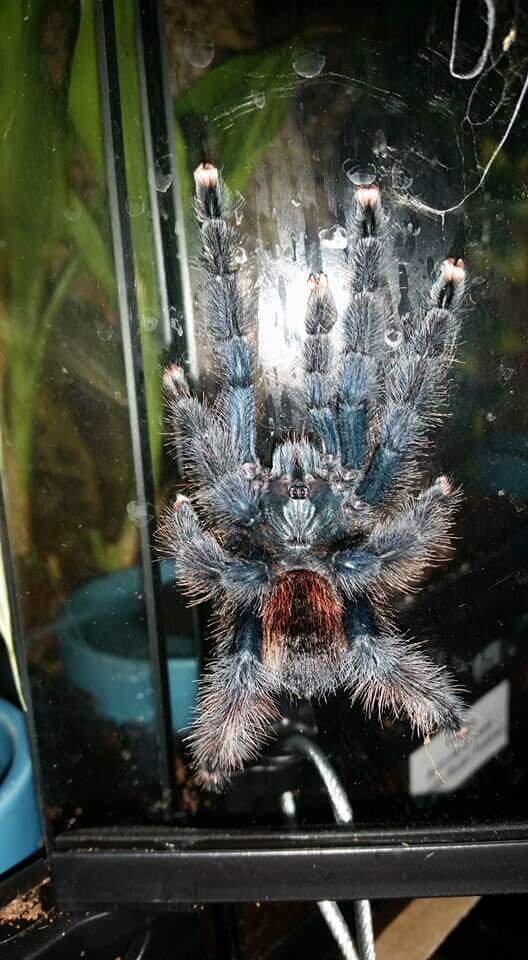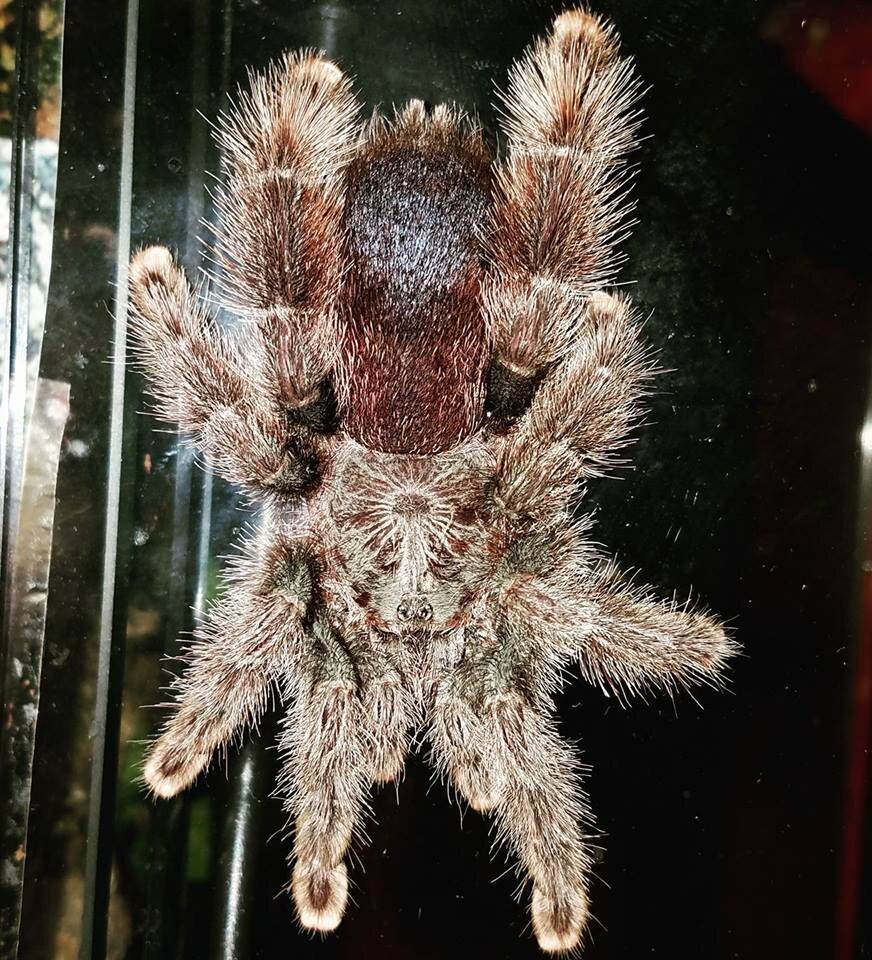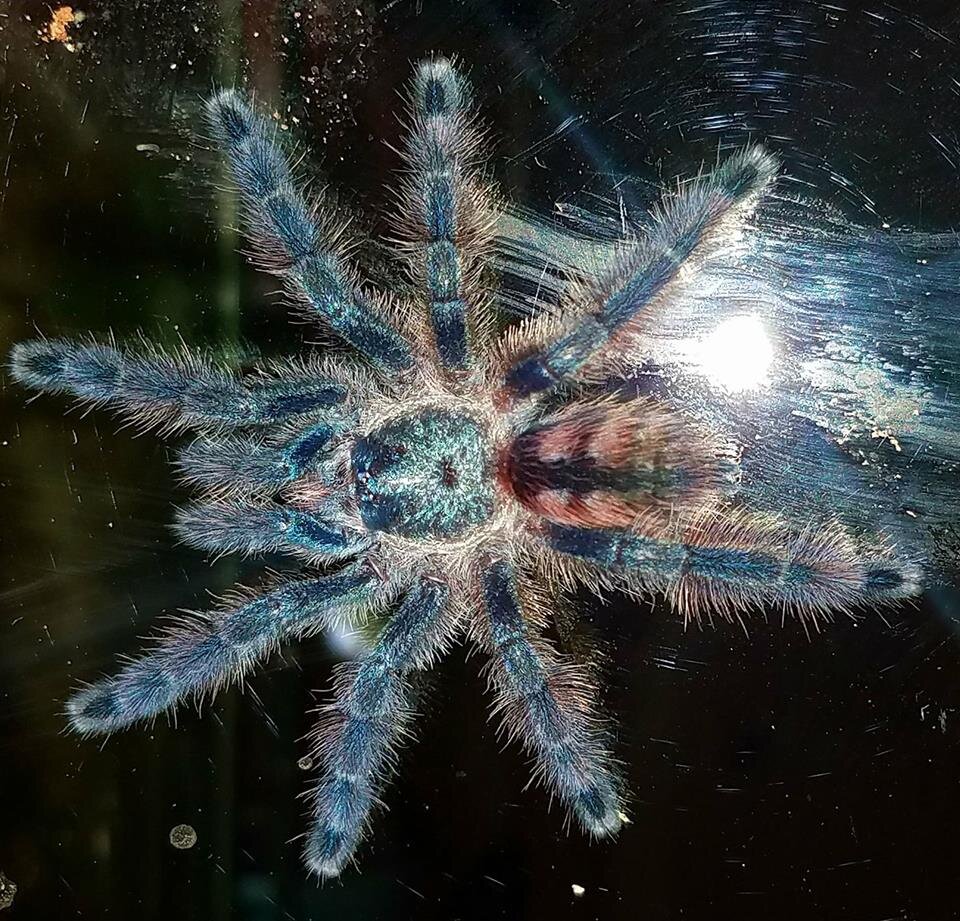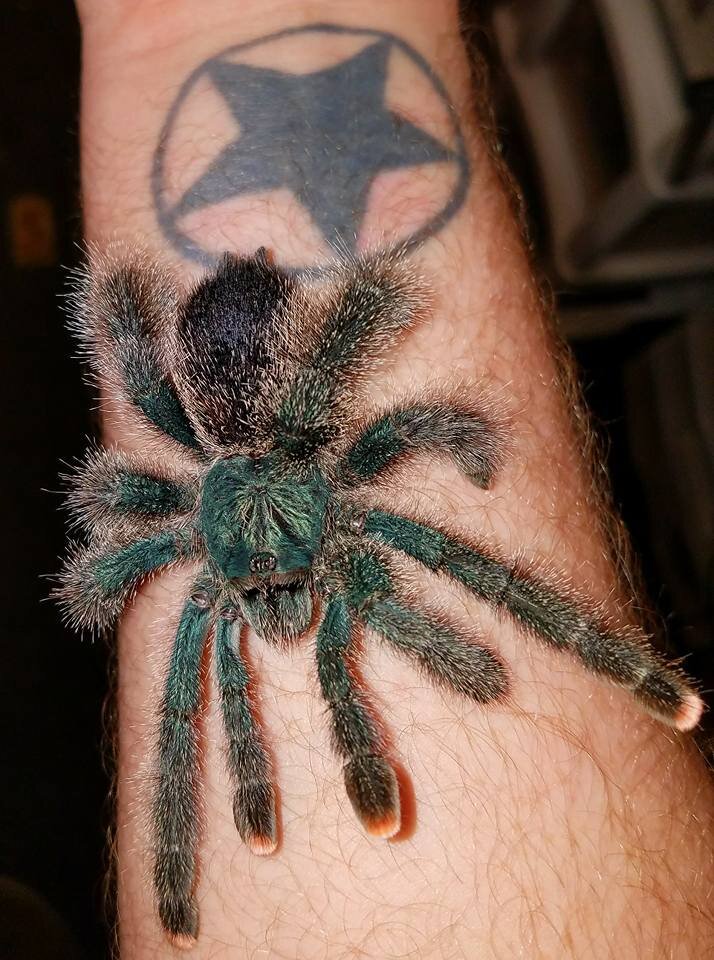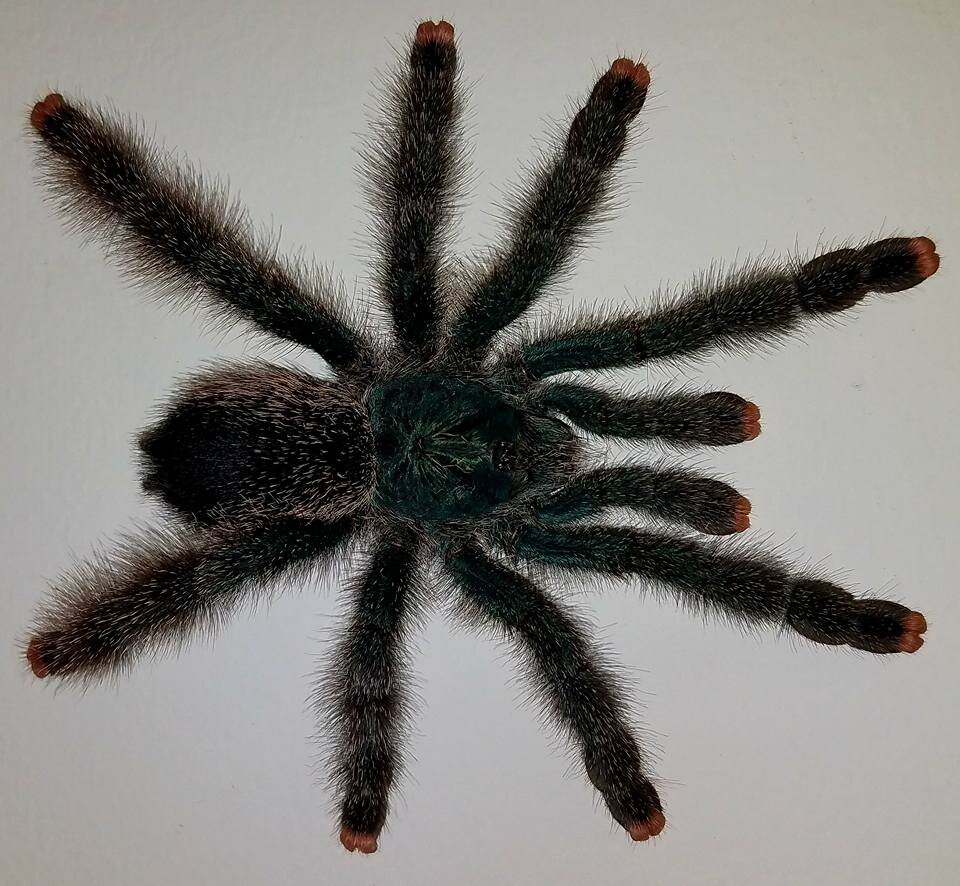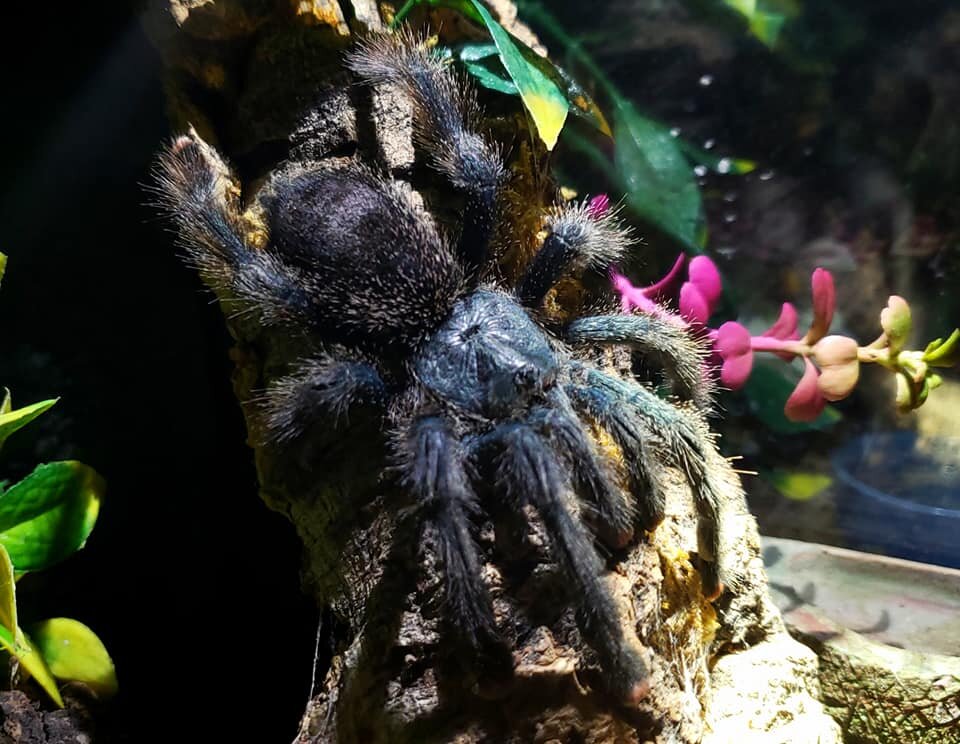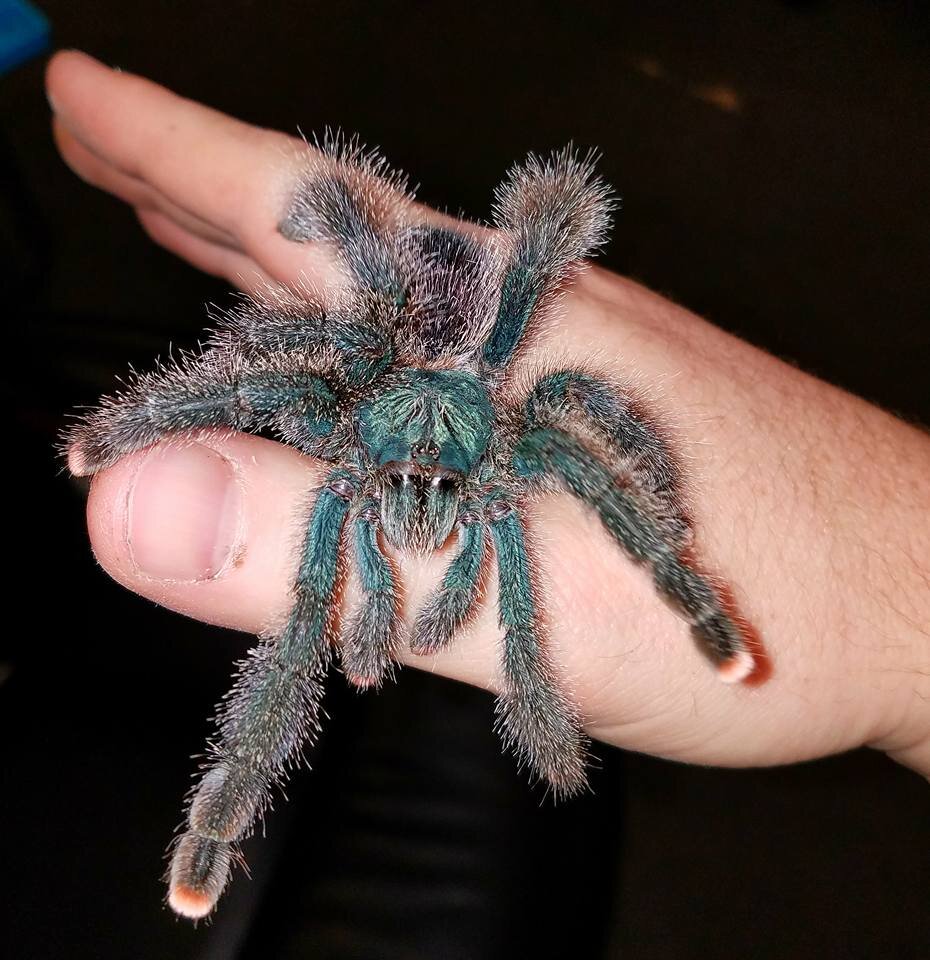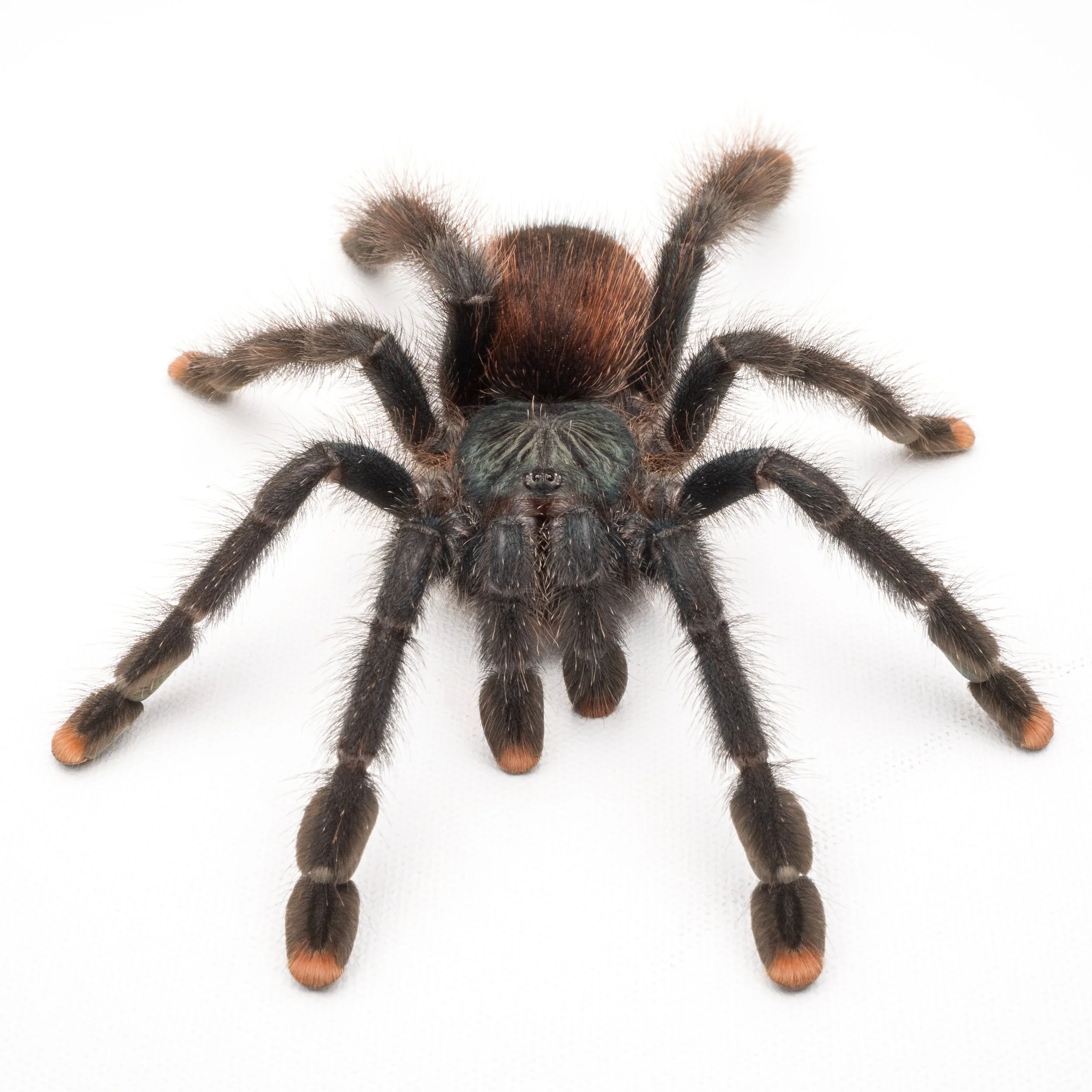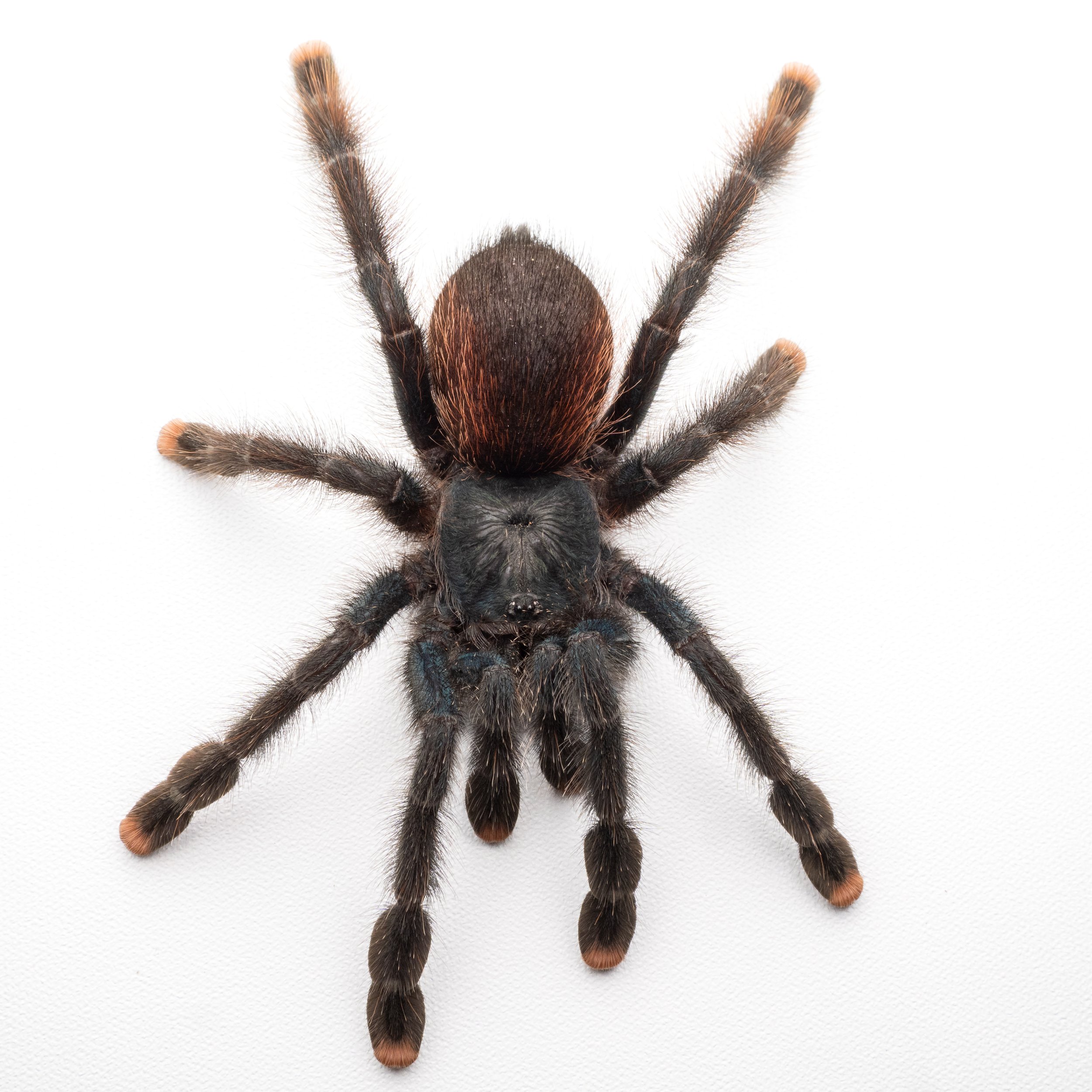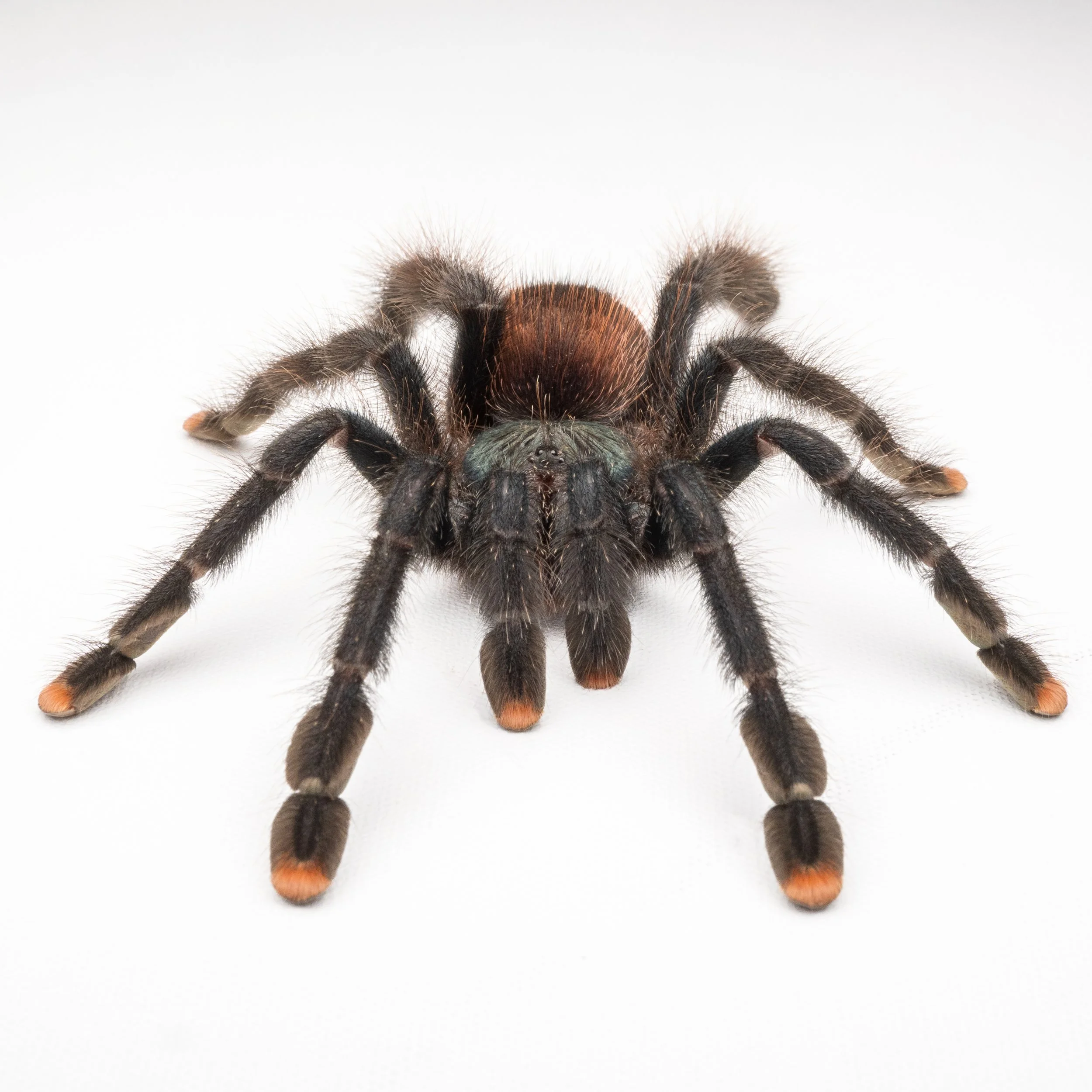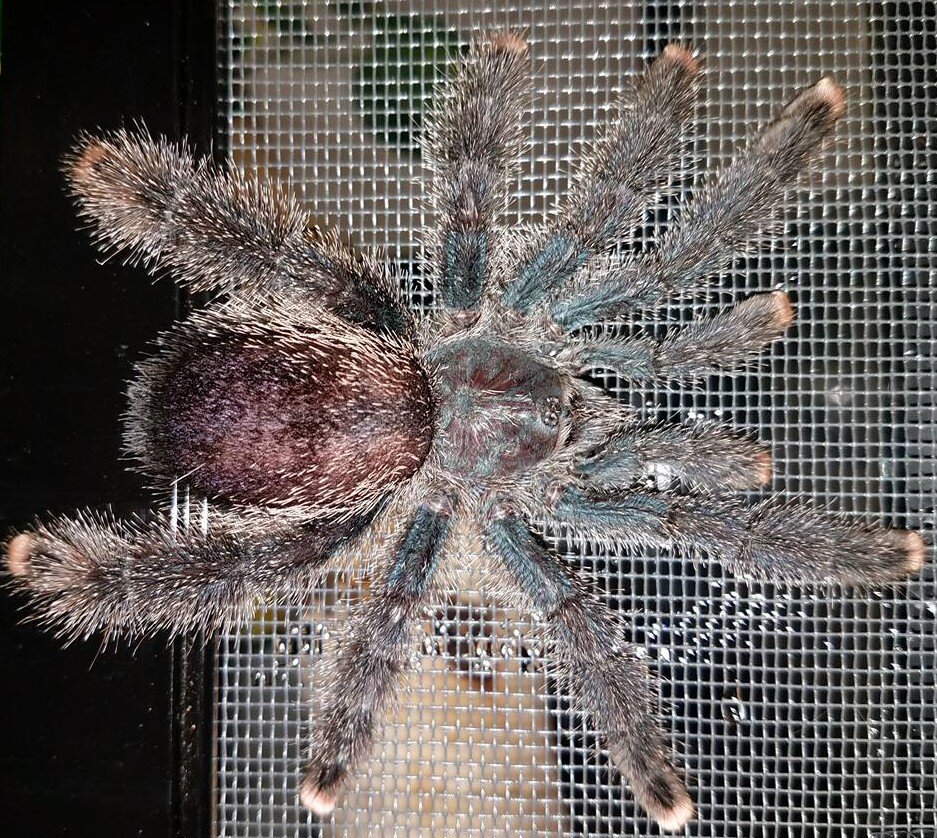Guyana Pinktoe Tarantula
Avicularia avicularia
Care Sheet
Guyana Pinktoe Care Video
Avicularia avicularia Care Guide
The Guyana Pinktoe Tarantula
Revision Date: March 2025
Introduction
The Avicularia avicularia, better known as the Guyana Pinktoe Tarantula, is a striking arboreal species native to the humid forests of Central and South America. Instantly recognizable by its velvety dark body and signature pink-tipped feet, this tarantula has long been a favorite in the hobby. Known for its generally docile nature and impressive climbing abilities, the Guyana Pinktoe is an excellent choice for keepers looking to add an active, web-building species to their collection.
Quick Species Snapshot
Scientific Name: Avicularia avicularia
Common Names: Guyana Pinktoe Tarantula, Common Pinktoe, South American Pinktoe, Pinktoe Tree Spider
Type: Arboreal
Category: New World
Native Range: Central and South America, including Brazil, Guyana, French Guiana, Trinidad, Venezuela, Suriname, Bolivia, and Peru
Size: Body length up to 2.75 inches (7 cm); diagonal leg span up to 6 inches (15 cm)
Urticating Hairs: Yes, Type II
Growth Rate: Fast
Life Expectancy: Females up to 12 years; males 3–4 years
Recommended Experience Level: Beginner
Etymology & Taxonomic Revisions
The name Avicularia comes from the Latin word "avicula", meaning "little bird," a reference to early misconceptions that these tarantulas preyed on birds, inspired by 18th-century illustrations of tarantulas capturing small birds. The species name avicularia follows the same origin, essentially translating to "little bird-eater," though in reality, these tarantulas primarily hunt insects and small invertebrates.
The Avicularia genus has undergone significant taxonomic revisions in recent years. A comprehensive revision by Fukushima & Bertani (2017) reclassified multiple species, consolidating several former Avicularia species under Avicularia avicularia. These changes were based on molecular and morphological studies that revealed considerable overlap among previously described species. Some notable species that were synonymized with Avicularia avicularia include:
Avicularia azuraklaasi
Avicularia bicegoi
Avicularia braunshauseni
Avicularia exilis
Avicularia juruensis (previously described populations, not all)
Avicularia velutina
These revisions helped clarify the natural variation within A. avicularia while reducing redundancy in the genus. However, as with all taxonomic classifications, ongoing research may lead to further refinements.
Sudden Avic Death Syndrome (SADS)
One challenging aspect of keeping Avicularia species, especially Avicularia avicularia, is the mysterious phenomenon commonly called Sudden Avic Death Syndrome (SADS). This refers to the sudden and unexplained death of Avicularia spiderlings and juveniles despite seemingly proper care. Several theories attempt to explain this, including excessive humidity, inadequate ventilation, or hidden fungal or bacterial issues.
In my experience, poor ventilation and excessively moist, stagnant conditions are the primary suspects. Ensuring your enclosure has excellent cross ventilation is key to preventing SADS. Rather than misting heavily, maintain humidity with a large water dish and occasional light misting or damp sphagnum moss. Avoid creating conditions where moisture builds up without sufficient airflow.
While adults are robust and forgiving of minor care mistakes, spiderlings and juveniles are much more fragile. Their sensitivity means they're more prone to sudden deaths, making them intermediate-level tarantulas to raise successfully. Proper ventilation and careful humidity control greatly reduce the risk.
Historically, wild-caught Avicularia species were common in the pet trade, leading to additional health problems and poor survival rates. Fortunately, captive breeding is now widespread, drastically improving health and survival chances. Always ensure your Avicularia avicularia is captive-bred from reputable breeders to avoid health issues and support responsible hobby practices.
Housing & Substrate – Arboreal Setup
In the wild, A. avicularia inhabits tropical rainforests, residing in silk tubes built between leaves and branches. To replicate this environment in captivity:
Spiderlings
Enclosure Size: Tarantula Cribs Treehouse Mini, Coffin Crib Mini, Treehouse Extra Small, Sling Crib
Substrate: Fill the bottom 1/3 of the enclosure with Terra Aranea by The Bio Dude.
Decor: Provide a vertical piece of cork bark (half-round preferred) secured with substrate, along with fake or live plants for additional cover.
Water: A shallow water dish should be provided.
Juveniles
Enclosure Size: Tarantula Cribs Treehouse Switch Small, Small Treehouse, Coffin Crib Medium, Crib 360 - 8 inch Arboreal
Substrate: Same as spiderlings—1/3 filled with Terra Aranea by The Bio Dude.
Decor: Vertical cork bark, fake/live plants, and a secure hiding spot.
Water: A small water dish should always be available.
Adults
Enclosure Size: Tarantula Cribs Treehouse Switch-XL2.0, Large Treehouse - Clear Back, Treehouse Switch - Large, Large Coffin Crib
Substrate: 1/3 of the enclosure filled with Terra Aranea by The Bio Dude.
Decor: Provide multiple vertical cork hides, branches, and artificial foliage to encourage webbing.
Water: A larger water dish at the bottom and an additional smaller dish higher in the enclosure can help ensure hydration.
Note: Use this affiliate link or enter the TTC10 code at checkout to save 10% on Tarantula Cribs enclosures.
Temperature & Humidity
Temperature: Maintain between 70–80°F (21–27°C).
Humidity: 60-70%, achieved through a combination of a large water dish and occasional misting. Ensure excellent cross-ventilation to prevent stagnant air, which can be detrimental to this species. Obsessing about hitting a specific humidity level can be detrimental. Just ensure the substrate is slightly damp, there is a large and shallow water bowl, and good cross ventilation and you should be fine.
Feeding Schedule
Spiderlings
Frequency:
Feed twice a week.Prey:
Offer small prey such as flightless fruit flies, confused flour beetles, or pre-killed tiny crickets/roach nymphs. Remove any uneaten prey after 24 hours. increase the size of the prey as the spider grows. Prekill any prey that is over 2/3 the size of the sling. For more detailed information on feeding spiderlings, watch this video: How To Feed Spiderlings & Scorplings (Baby Tarantulas & Scorpions)Post-Molt:
Wait 24–48 hours after a molt before feeding. Ensure that the tarantula’s fangs are solid black and its exoskeleton is not soft or shiny.
Juveniles
Frequency:
Feed every 7–10 days.Prey:
Provide 2–3 small to medium crickets or a medium Dubia roach.Feeding Guidelines:
If the abdomen is thinner than the widest part of the carapace, feed more prey more often.
If the abdomen is wider than the carapace, feed less prey, less often.
This strategy helps prevent obesity, which can lead to molting complications or increase the risk of an abdomen rupture from even a small fall.
Post-Molt:
Wait 3–7 days after a molt before feeding, ensuring that the tarantula’s fangs are solid black and its exoskeleton is fully hardened.
Adults
Frequency:
Feed every 2–3 weeks (or as needed).Prey:
Offer 4–5 large crickets or one large Dubia roach.Feeding Guidelines:
If the abdomen is thinner than the carapace’s widest part, increase feeding frequency.
If the abdomen is wider than the carapace, reduce feeding frequency.
This is crucial to avoid obesity, which can interfere with proper molting or cause dangerous issues such as an abdomen rupture.
Post-Molt:
Wait 5–10 days after a molt before feeding, ensuring that the tarantula’s fangs are solid black and its exoskeleton is fully hardened.
Behavior & Temperament
Avicularia avicularia is known for its docile nature and unique behaviors. While generally calm, they can be quick and are prone to jumping when startled. Unlike many New World species, their Type II urticating hairs are not kicked but can be transferred through direct contact. Additionally, they have been known to eject feces as a defense mechanism. Handling should be approached with caution due to their speed and tendency to leap.
Breeding Avicularia avicularia in Captivity
Breeding Avicularia avicularia (Pinktoe Tarantula) is generally more straightforward than some terrestrial species, but it still requires careful preparation due to their arboreal nature and specific humidity requirements. Captive breeding is essential to reduce the need for wild collection, ensuring the continued availability of this species in the hobby.
Sexual Maturity & Pairing
Male Maturity: Males reach maturity in 2–4 years, developing enlarged pedipalps for sperm transfer but no tibial hooks like terrestrial species.
Female Maturity: Females take 4–6 years to reach reproductive maturity.
Pre-Pairing Preparation: Ensure the female is well-fed before pairing to reduce any defensive responses. Maintain higher humidity (70–80%) and a well-ventilated enclosure to mimic their natural rainforest habitat.
Mating Process
Introduce the male into the female’s enclosure at night, providing multiple escape routes for him.
Males will often approach cautiously, performing palp drumming and leg tapping to signal the female.
If receptive, the female will allow the male to insert his emboli before separating.
Once mating is complete, the male should be removed immediately, though A. avicularia females are typically more tolerant post-mating than many terrestrial species.
Egg Sac Production
If fertilized, the female will produce an egg sac 4–5 months later.
Maintain 75–80°F (24–27°C) with high humidity (75–80%), ensuring proper ventilation to prevent mold growth.
The egg sac typically contains 50–200 eggs, fewer than many terrestrial species.
Egg Sac Handling (Optional)
Some breeders prefer to pull the egg sac after 30–45 days for artificial incubation.
If left with the mother, 1st instar spiderlings will emerge after 6–8 weeks, molting into 2nd instar within 3–4 weeks.
Raising Spiderlings
A. avicularia spiderlings are notoriously fast and delicate, so house them in ventilated arboreal enclosures with ample climbing surfaces.
Feed them pinhead crickets, flightless fruit flies, or small roaches every 3–4 days.
Maintain high humidity with proper airflow to prevent stagnant, overly damp conditions that could be harmful.
Challenges & Considerations
Delicate spiderlings: A. avicularia spiderlings are more fragile than terrestrial species, requiring careful humidity management and excellent ventilation.
Humidity balance: High humidity is essential, but stagnant air can lead to fungal or bacterial issues, so cross-ventilation is critical.
Female temperament varies: While A. avicularia females are usually tolerant, individual responses to males can differ, so careful monitoring is still advised.
Male lifespan: Males typically do not live beyond a year after maturing, so breeding attempts should be made as soon as possible.
Avicularia avicularia is one of the most recognizable arboreal tarantulas, but wild populations are still impacted by habitat loss and collection for the pet trade. By supporting captive breeding efforts, we can help reduce the demand for wild-caught specimens while ensuring a steady supply of healthy, well-acclimated tarantulas for the hobby. Proper captive breeding also helps maintain genetic diversity and improves the long-term sustainability of this species in captivity.
Final Thoughts
The Guyana Pinktoe Tarantula (Avicularia avicularia) is a fascinating species that offers a unique experience compared to other arboreal tarantulas. Unlike the lightning-fast and more defensive Poecilotheria species, A. avicularia is known for its more relaxed temperament, making it an excellent introduction to arboreal husbandry. Its striking pink-tipped feet, web-building behavior, and manageable care requirements make it a rewarding species for both beginners and experienced keepers alike. That said, proper husbandry and respect for its natural behaviors are essential to keeping this tarantula happy and healthy.
Additional Recommendations
For enclosures, I highly recommend Tarantula Cribs (use affiliate code TTC10 for 10% off). Pair this with Terra Aranea by The Bio Dude for optimal substrate conditions. When sourcing your tarantulas, consider Spider Shoppe and use code TTC10 to receive 10% off. For a curated list of trusted dealers and additional discounts, visit the Dealer & Discounts section on my website.
Avicularia Enclosure Set Up
Top 10 BEST Arboreal Tarantulas
In this video I am talking about the Top 10 Arboreal Tarantulas!
Avicularia Communals Pinktoe Tarantula Care YOU Should Know
In this clip from The Exotic Pet Collective Podcast with SkyeSpiders, we discuss keeping Avicularia avicularia in communal enclosures, the changes in care and husbandry from pinktoe tarantulas over the years, and the reclassification and name changes in the genus recently.
